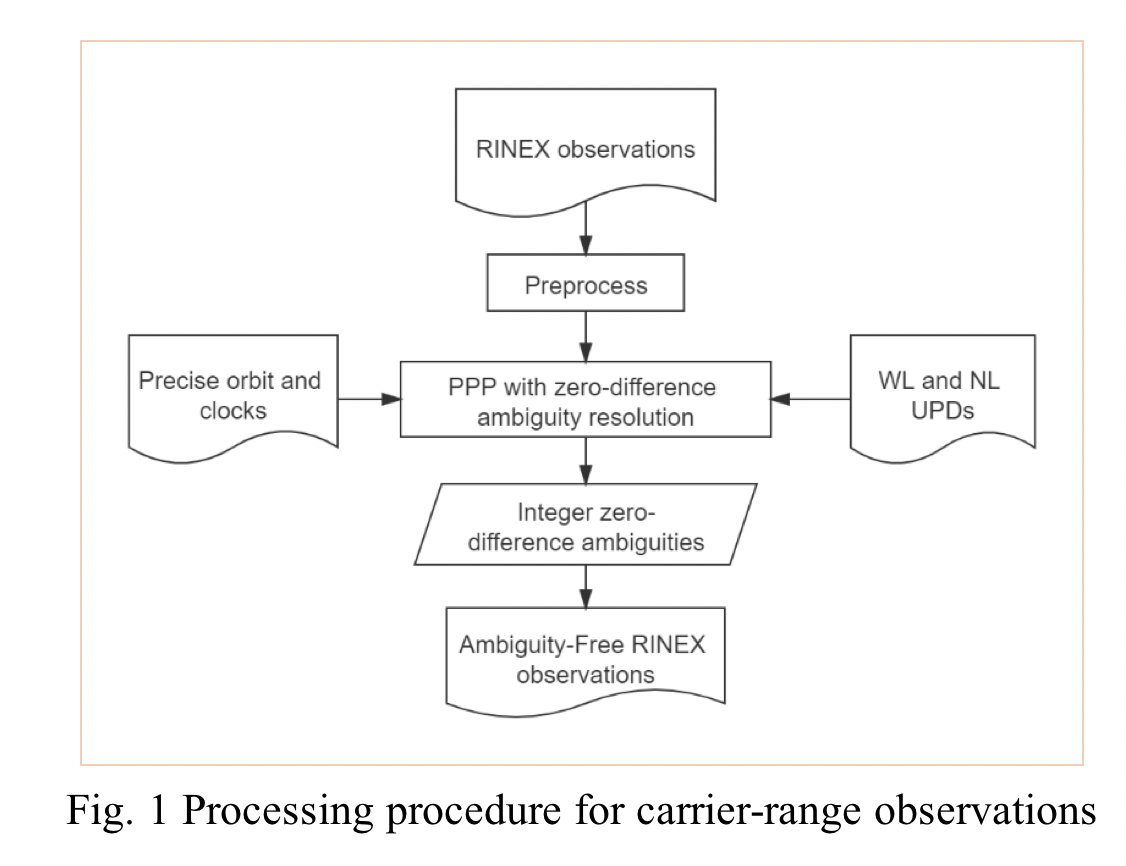Products Introduction
Multi-GNSS Carrier Range
Our multi-GNSS carrier-range observations are generated from RINEX observations of IGS and iGMAS stations, using GREAT software. Our precise orbit/clock and UPD products are also employed for single-receiver ambiguity resolution.
Advantages:
Carrier range is carrier phase with ambiguity calibrated and converted into a pseudorange data type. Carrier range data can be processed like range data but with millimeter-level precision. Moreover, with the ambiguity eliminated, the compute burden of parameter estimation with carrier range can be remarkably alleviated. Thus, it’s particular versatile for mass GNSS network resolution, precise orbit and clock estimation, precise point positioning, etc.
Processing procedure (see Fig 1)
1. RINEX observations of IGS and IGMAS stations are downloaded.
2. Preprocessing: detect cycle slips, remove outliers and eliminate short arcs.
3. Precise point positioning is multi-threading performed on each station using our multi-GNSS orbit and clock products.
4. Zero-difference integer ambiguities of each station are determined by calibrating the extra-wide-lane (EWL), wide-lane (WL) and narrow-lane (NL) UPDs.
5. Carrier-range observations are calculated with raw phase observations and integer ambiguities, and are written into new RINEX observation files.
